I’ve been chewing on a quote that is widely cited as a Byzantine proverb: “He who has bread has many problems; he who has no bread has one problem.”
I’d like to provide an updated version a là Alaska. It goes: “She who does not fear being eaten by a bear has many problems; she who fears being eaten by a bear has only one.”
I discovered this version while walking the brown hills of the northern Alaska interior, watching for brown bears that I sincerely hoped would never appear.

It was a once-in-a-lifetime adventure I hope to repeat as soon as I can. Alaska is a place that got under my skin more than a decade ago and has not let me go. This was my first adventure north of the Arctic Circle, driving more than 350 miles north of Fairbanks into a wilderness area accessible by road only since 1994. If I thought Alaska was wild before, this experience gave me a whole new appreciation for remote wilderness travel. This is as remote as you can get and still arrive by something other than bush plane, dog sled, or boat. This land does not invite tourists; it barely tolerates the humblest of guests.
I learned a lot on this trip, like how to use a CB radio, but two lessons that stuck as deep as the spongey tundra are worth repeating.
Lesson 1: Bears
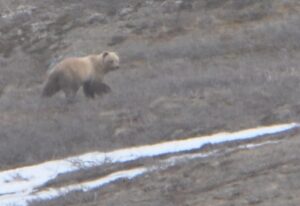
First, there is nothing like the literal fear of being eaten by a bear to eradicate years of stress. My inbox, that looming deadline, the oh-so-important report that is worth staying up all night to complete – they all vanished. (Sorry, boss). I was not worried about the latest news, the urgent phone call, the life plans (or lack thereof.) I had one thing and one thing only on my mind: did that brown rock just move?
My day pack jangled with bear bells and burst with extra layers, but it was lighter on my shoulders than all the daily cares I usually carry.
It is amazing how much stress we carry with us when we do not fear being eaten by a bear.
Lesson 2: Tundra
My second lesson grew from the tundra itself. I’m not sure what I was expecting north of the arctic circle in June – polar ice caps? Endless snowfields? – but it wasn’t rolling brown hills under a blazing 70 degree sun.
“It gets warm here,” one ranger told me when I asked if this was typical. “The difference is that here the season is very short. Snow will move back in by August.”
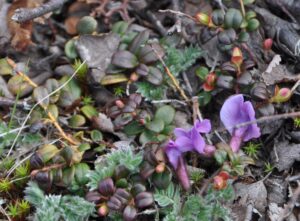
This was not the snowcapped peaks and glacier raceways that first endeared me to Alaska, but as I squelched across the muddy looking mounds, I began to notice something. While the hills looked brown from a distance, under my feet they sprouted with surprising color. They were a complex mesh of orange, tan, and sage. Some sported delicate flowers in white, pink, and lavender. Lichens and mosses wove tapestries with a species diversity that even my untrained eye could not fail to notice. Under my feet rose an entire forest of miniature plants as wild and tumultuous as the most magnificent forest – the entirety of their existence just happened to stretch mere inches above thin soil.
How much beauty do I fail to see because I am looking for a mountaintop experience rather than embracing the wild tumult of the life beneath my own two feet? How often do I see a lifeless brown when all I need to do is look a little closer to see bursts of life-giving color?
There are certainly snowcapped mountains around, but many hillsides of the northern interior do not sparkle with the silver peaks of their southern counterparts. Nor do they flash with the incessant whir of tourist’s cameras. Their deepest beauty is hidden in the wildness of their plain brown fronts, traversed more frequently by brown bears than by people.
Lessons For All of Us
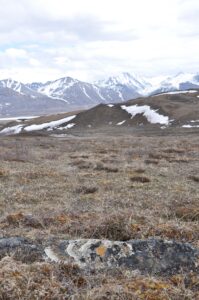 Fortunately, the closest I came on foot to one of the natives was a series of large tracks melting into the snow on the opposite ridge. Another day I watched from the car as a brown bear wandered up the hill and out of sight. It’s an experience that’s hard to replicate anyplace else, but the lessons apply to anyone.
Fortunately, the closest I came on foot to one of the natives was a series of large tracks melting into the snow on the opposite ridge. Another day I watched from the car as a brown bear wandered up the hill and out of sight. It’s an experience that’s hard to replicate anyplace else, but the lessons apply to anyone.
Try it.
Scan as far to the horizon as you can see. Look in every direction, even if it’s just across your living room. Ask yourself: Did that brown blob just move? Then look down. At the space between your feet. Notice every texture, every color, every crack, thread, or crumb. What do you see? What do you smell and hear and feel?
I tried it. It’s not the same as Alaska. But it’s amazing, when you’re not just searching but noticing, what beauty is hidden in the brown, what weighty lessons are waiting to be set down.
Pass the bread, please.
———-
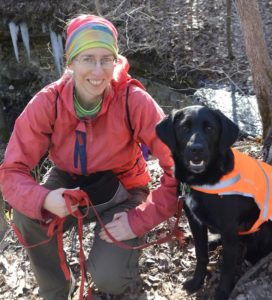
Janet Beagle, Ph.D. serves as director of graduate programs for Purdue University’s College of Engineering and is a writer, a Bible study teacher, and a student of God’s Word. In her spare time, she likes to eat other people’s cooking and hike with her two- and four-footed friends. Read more of Janet’s Christian reflections at www.mustardpatch.org

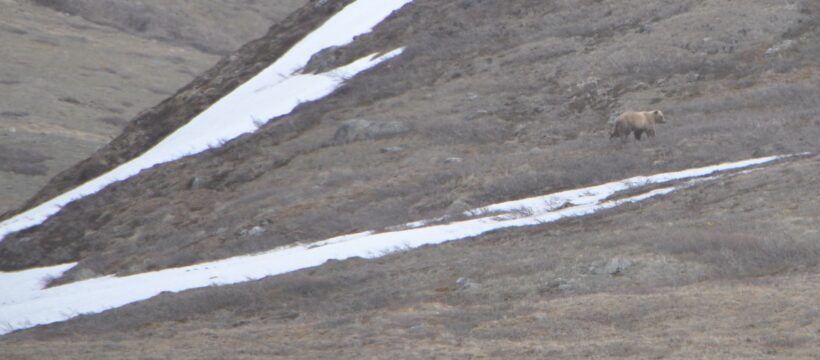


Love this, Janet! Thanks.
Thank you! 🙂
As a lover of the great outdoors, I absolutely loved this, Janet.
Wow! Thank you for reminding me of what’s really important. I’ve mostly only seen touristy parts of Alaska and they’re AmSu g. You make me want to see tundra.
Beautiful reminder, Janet!